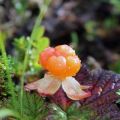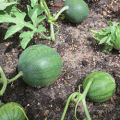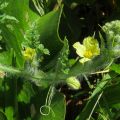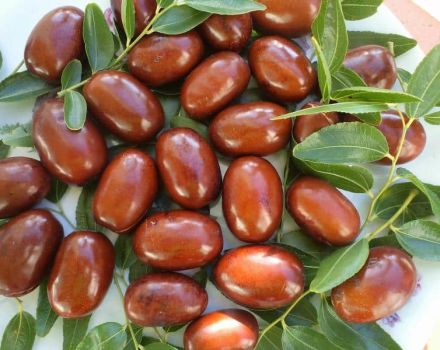How to grow cloudberries from seeds at home, planting and care
Many gardeners are involved in the cultivation of cloudberries, which grow well outdoors and in greenhouse conditions. Before planting such a berry, you need to understand the main features of its planting and growing.
Characteristics of culture
Garden cloudberries have distinctive characteristics that you should definitely familiarize yourself with.
External description of the plant
The bushes grow up to 30-35 centimeters in height and therefore do not need to be tied up. Berries are formed on them, which outwardly resemble raspberry fruits. However, cloudberry pulp is several times denser. They are small and only grow up to 2 to 3 centimeters long. Unripe berries are pink in color, and after ripening, their surface turns orange.
Suitable climatic conditions
Cloudberries must be grown in suitable climatic conditions and therefore it is recommended to figure out in advance in which regions it is better to plant them. Experts advise planting berries in the Far East and central Russia.
Also, the plant can be planted in any part of Belarus or Ukraine.
What diseases is prone to
Cloudberry bushes, like other plants, can die due to various diseases. The berry is susceptible to the following pathologies:
- oidium;
- black spot;
- gray rot;
- mildew.
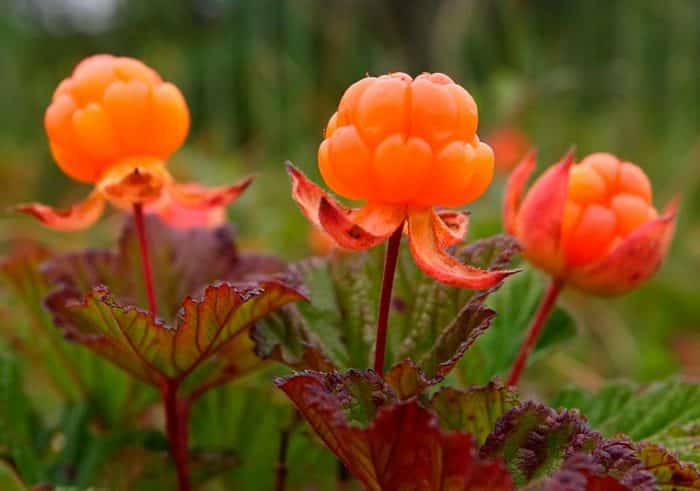
Planting cloudberries in open ground
Before planting the bushes in the garden at the dacha, you need to familiarize yourself with the basic nuances of planting.
Disembarkation dates
Many novice gardeners do not know when is the best time to plant berries in the garden. Experts recommend doing this spring so that the seedlings grow faster. At the same time, the end of April and the first half of May is considered the best landing date.
Choosing a strong and healthy seedling
It is very important to choose a healthy and strong seedling that will not die after planting in the ground. Experienced gardeners are advised to select seedlings for planting that have a developed root and at least three branches 3-4 centimeters long. Saplings without branches and with a weakened root system are not suitable for planting in open ground.

Required soil composition and planting pit dimensions
The berry should be planted in an area with soil that is acidic. Therefore, before planting, it is necessary to add ground sulfur to the soil. Also, the site can be acidified with an aqueous solution prepared from citric or acetic acid.
After preparing the soil, planting pits are created with a depth of 10-15 centimeters and a width of 20-30 centimeters.
Planting and care technology
When planting in the cloudberry area, the seedlings are carefully placed in the planting holes and covered with soil. All planted bushes are watered with warm water.
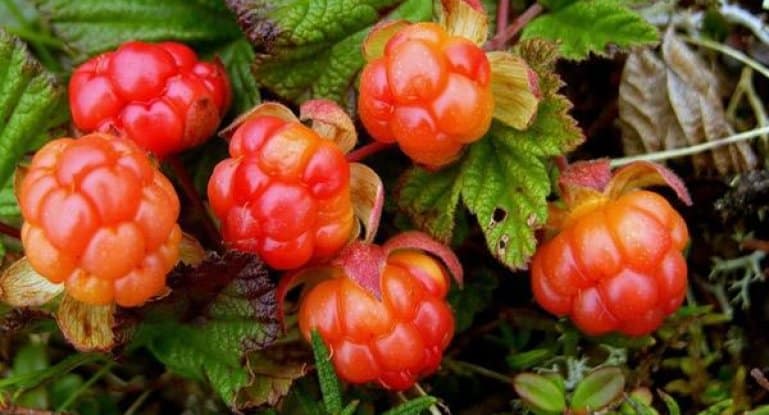
Agrotechnical techniques for good growth and fruiting
All berries need proper care, and cloudberries are no exception. Therefore, in order to properly care for the plant, it is necessary to understand the basic agrotechnical methods of growing.
How often to water
Bushes need regular watering, which helps to maintain optimal soil moisture. During watering, you must use heated and settled water. Do not use cold liquid as it can damage the root system. Soil moistening is done every day in the evening. One bush consumes 20-30 liters of water.

Fertilizer
In order for the planted berry to bear fruit better, you will have to periodically feed it. Experts advise feeding at least twice a season. In the spring, organic fertilizers such as manure and humus are added to the soil. During the fruiting period, plants are fertilized with mineral dressings and preparations to stimulate growth.
Plant pruning
Too often it is impossible to prune branches, as this will lead to drying out of the bushes. Only dried or diseased shoots can be removed from plants. In this case, the procedure is carried out in the first half of spring, until buds have formed on the stems. After the appearance of the first buds, trimming the shoots is contraindicated.
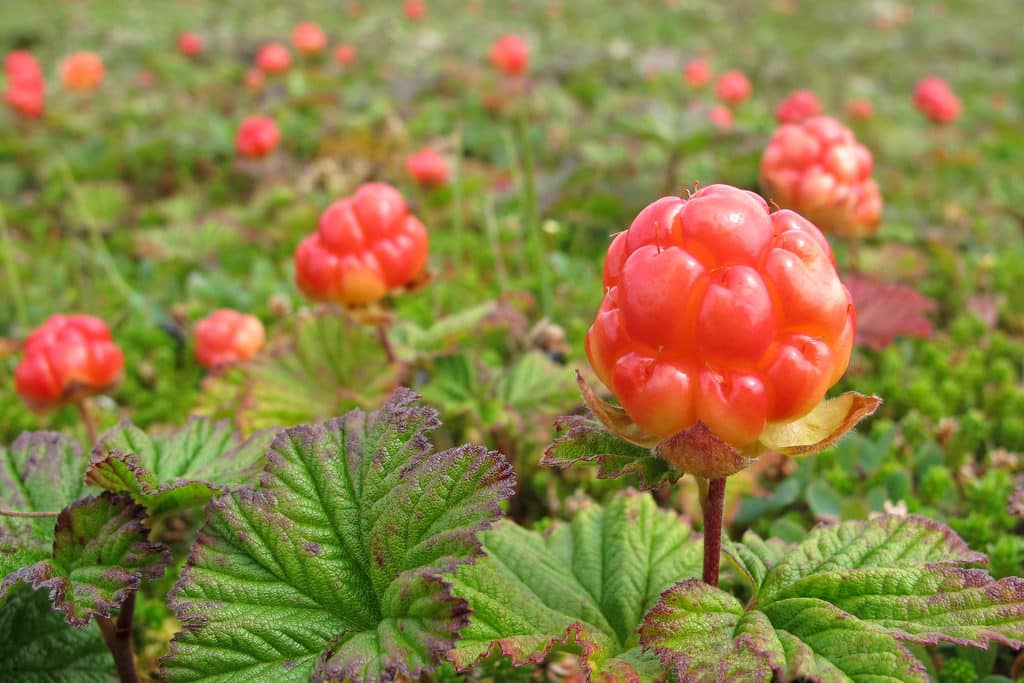
Treatment against diseases and pests
People who have been growing cloudberries for years often encounter dangerous pests and diseases. To protect the bushes, they are periodically treated with insecticidal preparations. The most effective remedies include "Metaphos", "Actellik" and "Karbofos".
Also, experienced gardeners are advised to regularly spray the bushes with Bordeaux liquid, which prevents the appearance of many pathologies. It is necessary to engage in preventive treatment of bushes 2-3 times per season.

Features of flowering and fruiting
Cloudberries have certain characteristics of fruiting and flowering that should be familiar with.
When to wait for the first color and berries
The beginning of flowering period directly depends on the region in which the plant is grown. It starts earlier in the southern regions, and later in the northern ones. However, most often flowers on bushes appear in late June and early July. Within 1-2 weeks after the start of flowering, the first fruits are formed on the bushes.
Harvest ripening time
The first ripe berries appear on the bushes in the second half of August. However, if the summer was too warm, the harvest has time to ripen until August 10-15.
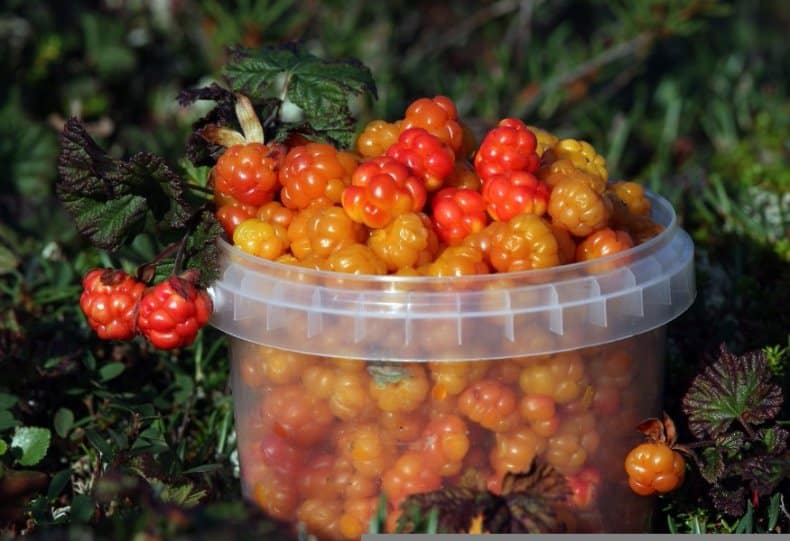
Collection and application of fruits
When the first ripe berries appeared on the bushes, they begin harvesting. At the same time, they harvest the fruits every 2-3 days so that the berries do not have time to overripe. Cloudberry growers advise against picking fruits after rain, as they will quickly deteriorate after that. If you want the harvested crop to be stored for a long time, it will have to be plucked along with the stalks.
Delicious jam and compote are prepared from cloudberry fruits. Some housewives put the crops in plastic bags and freeze them in the freezer. Also, medicinal teas, decoctions and tinctures are made from berries, which are often used in folk medicine.

How to propagate a bush
There are two main methods of propagation of cloudberry bushes, which are used by many gardeners. It is necessary to familiarize yourself with them in more detail in order to choose the best method for propagating seedlings.
Cuttings
Experienced gardeners use this method of plant propagation. To perform the procedure, strong cuttings of berries 10-12 centimeters high are cut in the forest. First, they are planted in containers with a nutrient substrate, after which they are covered with polyethylene. When growing such seedlings, they monitor the moisture content of the soil, which should not dry out.
The cuttings must be rooted for two weeks, after which they are planted in the garden.
Planting rooted seedlings can be done not only in the spring, but also in the fall before the start of frost.
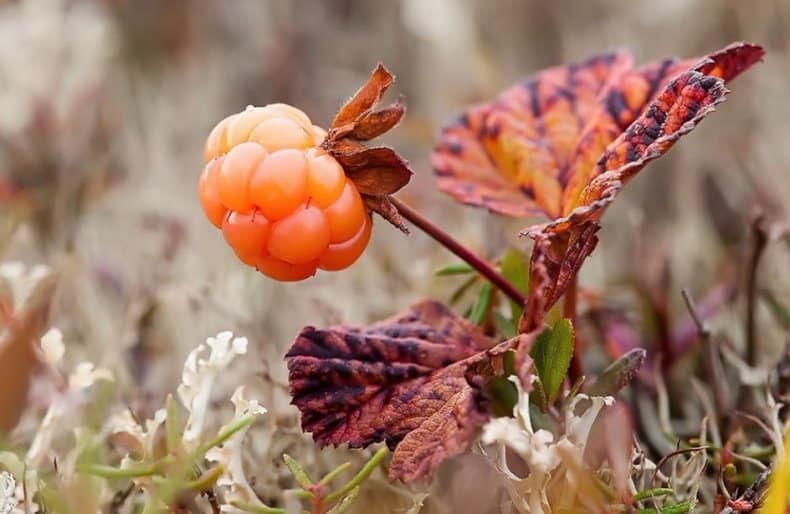
Seeds
People who do not want to propagate bushes with seeds try to grow cloudberries from frozen seeds at home. However, some gardeners do not recommend using this method, since shrubs grown from such material are many times weaker than their parents.
Many gardeners choose to freeze the harvested seeds for planting in spring or early summer. However, in order for the plant to grow strong, it is recommended to plant all the seeds after harvest - in the middle of autumn. At the same time, the seed is first planted in pots for growing seedlings, which will be transplanted into open ground in the future.

Popular varieties of cloudberries
Despite the considerable demand and popularity, breeders have not been able to bring out garden varieties of cloudberries. Therefore, all gardeners and gardeners grow ordinary garden cloudberries on their plots.
Conclusion
Cloudberry is a common berry that many gardeners grow in their summer cottages. Before planting this plant, you need to understand the characteristics of the culture, with the nuances of planting it and agricultural techniques that will help to harvest a good harvest of ripe berries.





